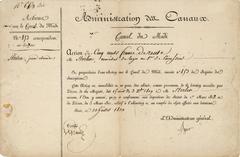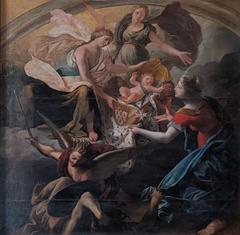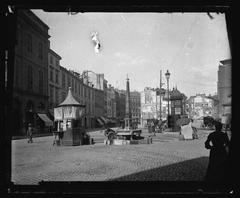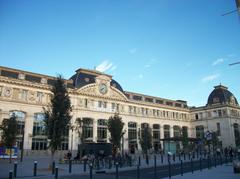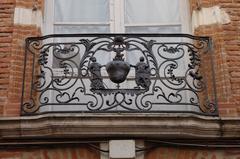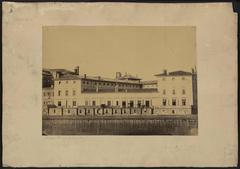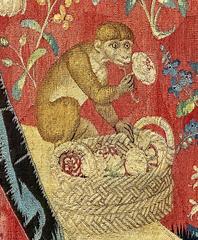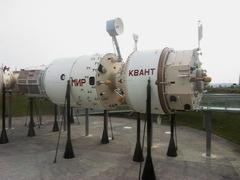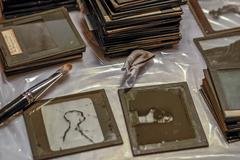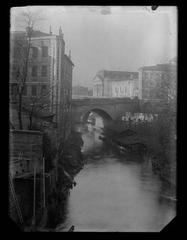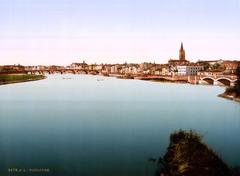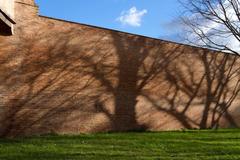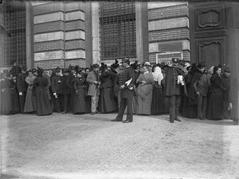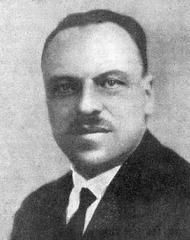Immeuble De Pierre De Saint-Etienne: Visiting Hours, Tickets, and Guide to Historical Sites in Toulouse
Date: 14/06/2025
Introduction
The Immeuble De Pierre De Saint-Etienne, also known as the Hôtel de Pierre, is an architectural gem located in the historic Saint-Étienne quarter of Toulouse. Distinguished by its unique stone façade amidst the city’s iconic pink brick buildings, the Immeuble offers a remarkable window into the evolution of Toulouse’s ecclesiastical, aristocratic, and urban heritage. This comprehensive guide explores the building’s layered history, architectural features, visiting information, and tips for experiencing this extraordinary monument and its vibrant surroundings.
For up-to-date information, visitors should consult the official Toulouse Tourism website, Archives Toulouse, and POP Culture Gouv.
Contents
- Early Origins and Ecclesiastical Foundations
- Renaissance and Early Modern Transformations
- Baroque Rebuilding and Neoclassical Enhancements
- 19th- and 20th-Century Urban Development
- Architectural Features and Artistic Detailing
- Urban and Cultural Significance
- Visiting Information
- Visiting Hours and Tickets
- Guided Tours and Accessibility
- Special Events
- Getting There
- Surrounding Attractions
- Visitor Tips
- Frequently Asked Questions (FAQ)
- Visual Experience
- Conclusion
- Sources and Further Reading
Early Origins and Ecclesiastical Foundations
The site of the Immeuble De Pierre De Saint-Etienne traces its origins to the late 6th century, when it served as the residence of the Bishop of Toulouse (archives.toulouse.fr). By the 12th century, the complex had expanded, marked by features such as a bishop’s well and accommodations for royal guests, reflecting its status as both a religious and political center.
Renaissance and Early Modern Transformations
During the 16th century, Toulouse experienced significant growth and affluence due to the pastel (woad) trade—a period known as the “Pastel era.” This prosperity enabled bishops like Jean d’Orléans to commission grand entrances, stables, and libraries, while later figures such as Cardinal de Joyeuse further enriched the site with galleries and carriage houses (frenchmoments.eu).
Baroque Rebuilding and Neoclassical Enhancements
A devastating fire in 1689 prompted a major reconstruction led by Archbishop Jean-Baptiste Colbert de Saint-Pouange. Architect Nicolas Buterne and master mason Jacques Pamiès rebuilt the southern wing, while Jean Pujos crafted a monumental staircase in 1691. Augustin-Charles d’Aviler introduced Versailles-inspired garden and stable designs. By the late 18th century, neoclassical interiors and a clergy library designed by Jean-Arnaud Raymond reflected Enlightenment-era refinement (archives.toulouse.fr).
19th- and 20th-Century Urban Development
Toulouse’s modern era brought Haussmann-style urbanization and new residential projects. The Société Immobilière Grenobloise Toulousaine oversaw the transformation of the Immeuble De Pierre, integrating modern amenities while preserving its architectural grandeur (worldtravelguide.net). In the late 20th century, “Le Carré Saint-Étienne,” designed by Pierre-Louis Taillandier and Jacques Sutter, further reinterpreted the local architectural tradition, blending contemporary elements with classic inspiration (pss-archi.eu).
Architectural Features and Artistic Detailing
The Immeuble De Pierre De Saint-Etienne stands out for its rare use of white stone in a city famed for terracotta brick (e-a-a.com). Originally constructed for Jean de Bagis in the 16th century and attributed to Nicolas Bachelier, the building features Renaissance symmetry, pilasters, and intricate sculptural reliefs (POP Culture Gouv). Later modifications introduced Baroque and Neoclassical flourishes, while the modern “Carré Saint-Étienne” features contemporary materials, green courtyards, and colorful glass panels.
Urban and Cultural Significance
Beyond its architectural merit, the Immeuble De Pierre has long been a center for religious, legal, and social activity. Proximity to the cathedral and former archiepiscopal palace made the Saint-Étienne quarter a favored destination for Toulouse’s elite, fostering intellectual and political life during the Enlightenment (Epoktour). Today, the area thrives as the “quartier des antiquaires,” home to numerous galleries, shops, and cultural venues (Toulouse Tourisme).
Visiting Information
Visiting Hours and Tickets
- Immeuble De Pierre De Saint-Etienne (Hôtel de Pierre): This historic building is generally not open for regular public visits as it is primarily private property. However, it occasionally opens for special events such as European Heritage Days.
- Modern Immeuble (Le Carré Saint-Étienne): As a residential complex, it is not accessible for public interior visits, but its striking exterior and the surrounding public spaces are viewable daily from dawn to dusk.
- Tickets: No tickets are required to view the exterior. When special tours are offered, ticketing information is posted on the Toulouse Tourism website or available through local heritage associations.
Guided Tours and Accessibility
- Guided Tours: Heritage associations and tour operators (e.g., Epoktour) occasionally offer guided tours during cultural events. Booking in advance is advised.
- Accessibility: Public areas surrounding the building are pedestrian-friendly and generally accessible. Interior accessibility is limited due to the historic nature of the structures.
Special Events
- Heritage Days: The best opportunity to visit interior spaces is during European Heritage Days (Journées du Patrimoine) or other local cultural initiatives. Check city event calendars for details.
Getting There
- Location: Saint-Étienne quarter, rue de la Dalbade, within walking distance of the Capitole and Place Wilson (barnes-toulouse.com).
- Transport: Easily accessible by foot, public transport, and with nearby parking facilities.
Surrounding Attractions
- Saint-Étienne Cathedral: A southern Gothic masterpiece.
- Place Saint-Étienne: Historic square with boutiques and cafes.
- Musée des Augustins: Fine arts museum in a former monastery.
- Jardin des Plantes: Expansive botanical gardens.
- Historic Mansions: Renaissance and medieval hôtels particuliers.
Visitor Tips
- Plan Visits Around Events: Access to interiors is typically only possible during Heritage Days or special events.
- Photography: Early morning and late afternoon offer the best lighting.
- Respect Privacy: Both the historic and modern buildings are private properties; admire from public areas.
- Use Tourism Passes: The Toulouse Tourism Pass offers discounts and museum entries.
- Check for Urban Works: Construction may occasionally impact access, especially on nearby streets (La Dépêche).
Frequently Asked Questions (FAQ)
Q: Is the Immeuble De Pierre De Saint-Etienne open to the public?
A: Interior access is limited; the building is generally private except during heritage events.
Q: How can I book a guided tour?
A: Contact the Toulouse Tourism Office or local tour operators for availability.
Q: Are there entrance fees?
A: Not for exterior viewing; fees may apply for special tours.
Q: Is the building accessible for people with disabilities?
A: Surrounding public areas are accessible; historic interiors may have limitations.
Q: What else can I see nearby?
A: The Saint-Étienne Cathedral, Place du Capitole, Musée des Augustins, and more.
Visual Experience
For more visuals and virtual experiences, visit the Toulouse Tourism website.
Conclusion
The Immeuble De Pierre De Saint-Etienne is not only an architectural landmark but also a vibrant symbol of Toulouse’s historical evolution and cultural vitality. Its rare stone façade, Renaissance origins, and continued presence in a dynamic urban quarter make it a must-see for visitors seeking to understand the city’s blend of tradition and innovation. Plan your visit around cultural events, explore the surrounding heritage sites, and immerse yourself in the rich tapestry of Toulouse’s urban life.
For curated tours, up-to-date access details, and more insights into Toulouse’s historical treasures, download the Audiala app and follow related content on our platform.

